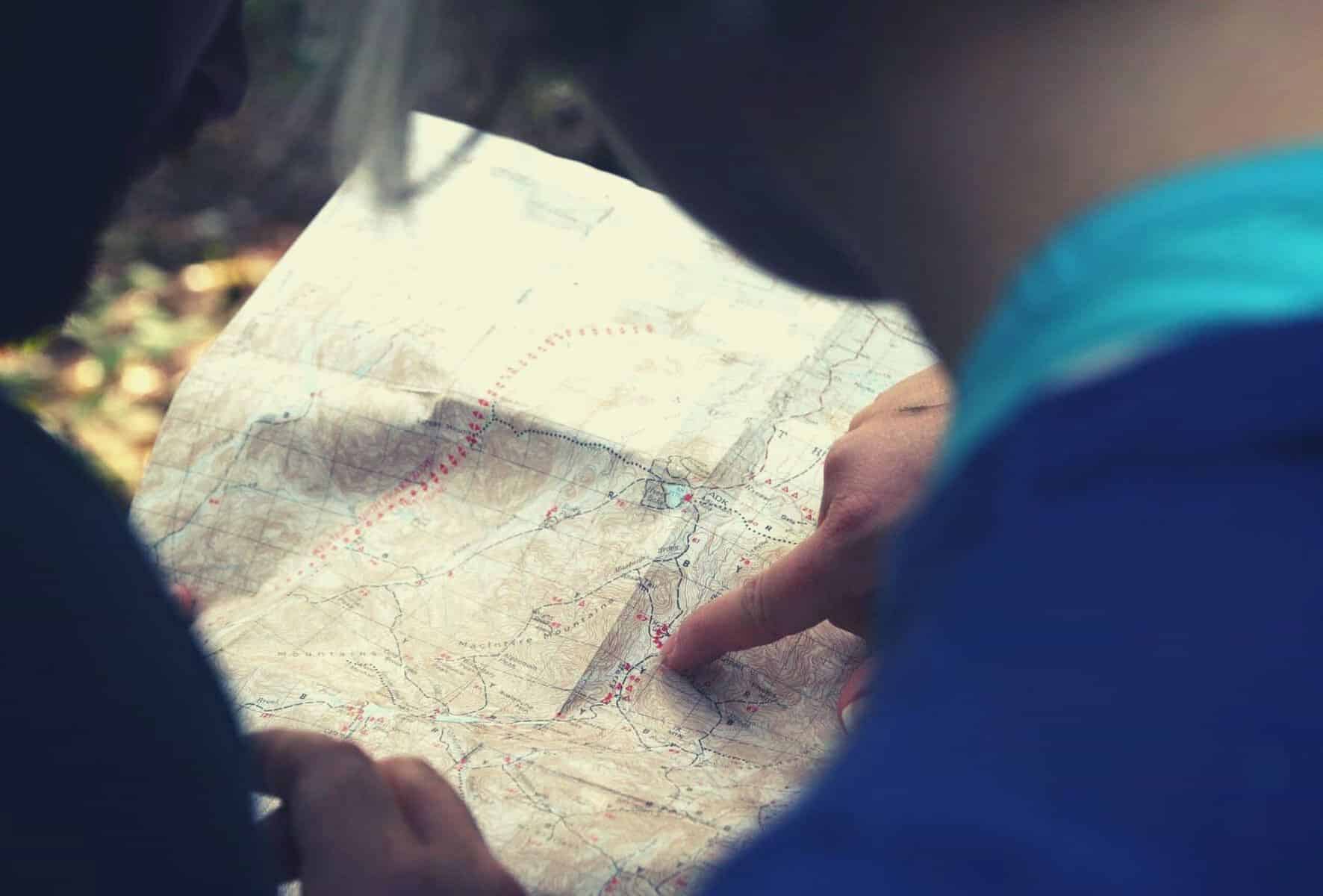Unless you happen to be an orienteering Jedi or amateur cartographer, the chances are that at this moment you’d be hard-pressed to identify the four cardinal directions from where you are sat reading this article.
Getting lost is a common occurrence for many people, even despite (or possibly due to) the increasing reliance on technology such as backpacking GPS units to help you find your way.
But you don’t have to be a topography fetishist or wannabe map-maker to develop a better sense of direction. Using a few simple tricks will improve a bad (or good) sense of direction, and improve your ability to navigate quickly and safely in the backcountry.
In the following article on how to improve your sense of direction, we’ll show you how to develop a better sense of direction than Bear Grylls by following a few simple, effective tips.
No Sense of Direction? Read on (That means Down, By the way!)
Make it a Habit
The simplest and most effective way to develop any skill or ability is to use it as much as possible. With regard to our sense of direction, this can be done in our everyday lives at home and at work, and also when out in the backcountry.
At Home
Try to make a habit of taking a mental reading of your bearings at least a few times per day. If, for instance, you’re sitting at your breakfast table reading this post, which way is north? If you don’t know, get your map out or use an online map to establish the four cardinal directions and work from that.
To up the stakes a little, try doing the above whenever you have any “dead time” throughout the day—in line at the bank or supermarket, taking a shower, waiting to pick the kids up from school, and/or pretending to listen to your boss or colleagues.
When you get home you can check your calculations on your map, or, if you really want to geek out, you can carry a compass with you and pull it out to check your accuracy.
In the Field
If there’s one means of improving your sense of direction that tops all others, it is, simply put:
Pay Attention!
Developing awareness is twofold consisting of both reducing distractions and actively noticing what’s around you.
Reducing distractions can be as simple as being mindful of what you’re up to as you progress along the trail, trying to stay focused on the terrain, and making sure that you don’t get too caught up in conversations or daydreaming.
Enhancing your awareness of your surroundings can be done by taking mental snapshots of your whereabouts every time the scenery changes, thereby giving yourself something to refer to when heading the other way or trying to remember which features you’ve passed and which are yet to come.
A second method involves simply “ticking off” or mentally noting significant features in the terrain as you go and noting where they are in relation to the trail or other features.
Test Yourself
Anyone who has ever learned a language will know that our brain is prone to let slip acquired capabilities over time. As such, a little refresher course in directional skills and the odd test of said skills is necessary to keep them up to scratch. Giving your brain’s left hemisphere (the part that controls spatial awareness) a little workout will serve you well when need it in a pinch.
As you walk on the trail, mental mapping is the best way to boost your automatic orientation. If you’ve studied your topos before a hike, you can test yourself by creating a mental visual of what you expect to see—and where—around the next bend in the trail or over the next pass and so on (and then assessing where you went wrong if you happen to do so).
Off-trail, you can fine-tune your directional sense by not only aiming to identify vague cardinal directions but by attempting to estimate the precise bearing of features (hills, buildings, the coffee stand across the street) in relation to where you are and then checking your estimates against a compass reading.
FURTHER READING: If you want to test yourself further, then check out our guide on how to navigate without a compass.
Get the Lay of the Land – Making Mental Maps to Improve Your sense of Direction
This refers to forming a mental map of your surrounding area, whether that be at home, in the town where you work, or the area in which you plan to do your hiking.
In the area where you live, having a mental image of where features and landmarks stand in relation to one another will allow you to estimate bearings from different locations and give you multiple reference points for mentally exercising your sense of direction throughout the day.
Before heading out on a hike, establishing a mental map of what the area’s main features (valleys, peaks, rivers, lakes) will look like once there and storing these in your spatial memory will let you orient yourself far more quickly and ensure that you always figure out where you’re headed and where you are at any given point.
…and the Skies
If you really want to up your game and have another, highly reliable point of reference for nighttime navigation, instead of just getting the lay of the land, get the lay of the skies.
By learning and being able to identify the constellations, particularly the North Star/Polaris (in the Northern Hemisphere) and the Southern Cross (in the Southern Hemisphere), on clear nights in areas with low light pollution you’ll be able to get your bearings by simply aiming your gaze a little upward.
Alternatively, knowing that the sun rises in the east, travels through the south and sets in the west can help prevent you from getting disoriented. By estimating the height of the sun in the sky, and knowing the time of day should help.

